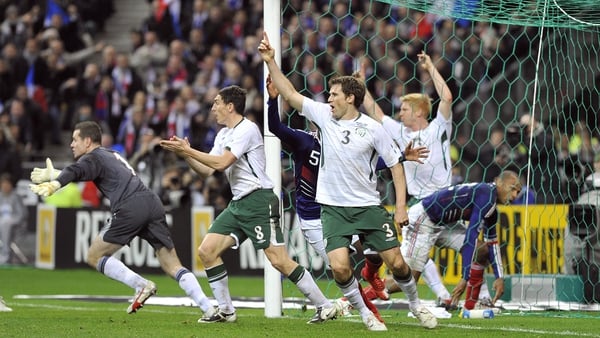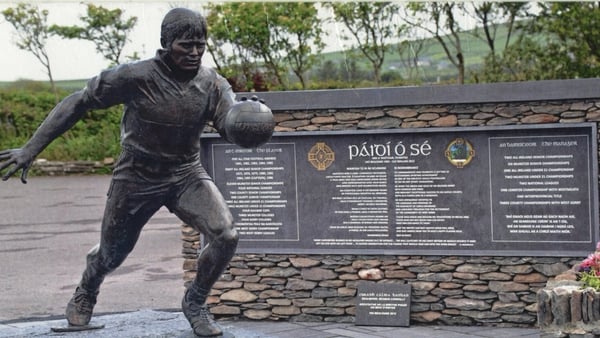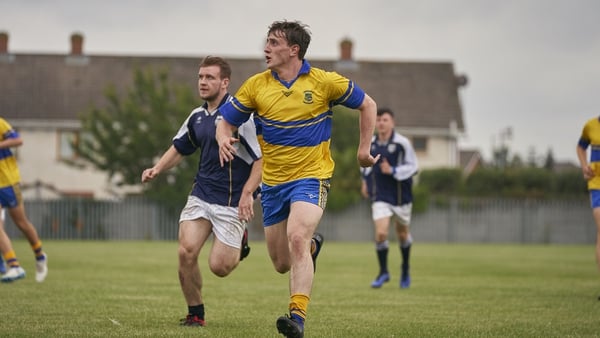Analysis: the painting embodies many of the complexities that deny a simple representation of modern Irish history
This article is now available above as a Brainstorm podcast. You can subscribe to the Brainstorm podcast through Apple Podcasts, Stitcher, Spotify or wherever you get your podcasts .
Irish painter John Lavery's monumental High Treason, Court of Criminal Appeal: The Trial of Sir Roger Casement 1916 measures ten feet wide by six feet high and engulfs any wall on which it is hung. The painting depicts judges seated on the courtroom bench gazing down at Roger Casement in the dock awaiting the results of his appeal against conviction for high treason and sentence of death for his role in the Easter Rising. While multiple public displays of the painting during the Decade of Centenaries has transformed it into a celebrated and treasured artistic interpretation of a key moment in modern Irish history, controversy surrounded the artwork from the outset.
Born in Dublin in 1864 and educated in Ballymena, Co. Antrim, Casement was a humanitarian and Irish nationalist. He had entered the British consular service and was knighted in 1911 for revealing the injustice of the colonial exploitation in the Congo and in South America. But this award sat somewhat uneasily with Casement and he soon retired from the consular service and became even more committed to Irish causes, advocating for a fully independent Ireland.
We need your consent to load this rte-player contentWe use rte-player to manage extra content that can set cookies on your device and collect data about your activity. Please review their details and accept them to load the content.Manage Preferences
From RTÉ Radio 1's Today with Seán O'Rourke show, historian Diarmuid Ferriter on the complicated legacy of executed 1916 leader Roger Casement
In 1914, Casement travelled to Germany to procure weapons for what became the Easter Rising but was arrested on Banna Strand, Co. Kerry in 1916 having alighted from a German submarine. He was in British custody in England while the Easter Rising took place.
He was tried for high treason at the Old Bailey in London, a trial which took place in front of a packed courtroom and was covered widely in newspapers. The jury returned a guilty verdict of treason on June 29th 1916, but Casement also had a right of appeal, which was heard by five judges on July 17th and 18th. The appeal was dismissed and Casement was hanged in London's Pentonville Prison on August 3rd 1916 and buried in the prison yard. In 1965 his remains were repatriated to Ireland where he was given a state funeral and buried at the front entrance to Glasnevin Cemetery.
We need your consent to load this rte-player contentWe use rte-player to manage extra content that can set cookies on your device and collect data about your activity. Please review their details and accept them to load the content.Manage Preferences
From RTÉ Archives, RTÉ News report on the return of Roger Casement's remains to Ireland in 1965
Lavery was informally invited to paint the appeal proceedings and the presiding judge arranged for him to occupy the empty jury box, directly opposite the accused. Lavery was a keen observer of Irish affairs and he painted a number of subject paintings which illustrate his interest in Irish politics.
However, the initial commissioning of the painting was met with disappointment and doubt from commentators During the trial, appeal and execution, British officials circulated diaries which detailed Casement’s homosexual activity. At a time when homosexual tastes and practices were widely loathed, the diaries were distributed in order to taint his character, silence influential supporters and to 'ensure that he did not achieve the status of a martyr for the Irish cause’.
The diaries had an inevitable effect on public opinion. Some were concerned that painting Casement in the middle of this controversy would have a detrimental effect on Lavery’s career remarking that ‘the forthcoming picture is sure to attract immense attention but scarcely the kind of notice that so popular an artist is seeking’.
We need your consent to load this rte-player contentWe use rte-player to manage extra content that can set cookies on your device and collect data about your activity. Please review their details and accept them to load the content.Manage Preferences
From RTÉ Radio 1's History Show, barrister and historian John McGuiggan on why John Lavery's painting of Roger Casement in the dock is so significant
Despite these objections, Lavery persevered with mindful accuracy and worked on a sketch in the courtroom while keeping his box of paints hidden. The presence of an artist in court was, and remains, regular practice with weekly magazines publishing illustrations of court scenes. Commissioning a huge canvas of over 40 individual portraits from a society portrait painter like Lavery was, however, exceptional.
Lavery did not complete the painting until the 1930s and it was still in his studio at his death in 1941. Despite the intentions in his will, the National Portrait Gallery declined to accept it as the trustees did not consider the occasion important enough for representation. In refusing to accept the artwork into the collection, the Gallery was turning its back on a key event in early 20th century British-Irish history. The painting eventually became part of the British government art collection, but it was never put on public display.
In refusing to accept the artwork into the collection, the Gallery was turning its back on a key event in early 20th century British-Irish history
In 1951, as a gesture of goodwill to the government of the new Republic of Ireland, the painting was finally placed on long-term loan to Dublin and was unveiled by President Seán T. O’Kelly at King’s Inn. The painting remains on indefinite loan to King’s Inns which is based between Henrietta Street and Constitution Hill in Dublin 1. It has featured in many exhibitions in recent years including ‘High Treason: Roger Casement’ at the Hugh Lane Gallery in 2016 where it was displayed along with Lavery’s preparatory study of the same subject.
Lavery’s High Treason remains monumental not only in size, but also in significance as a historical source in representing Casement’s ill-fated appeal, execution and contested historical legacy. The story of the painting embodies many of the complexities that deny a simple representation of modern Irish history.
The views expressed here are those of the author and do not represent or reflect the views of RTÉ






